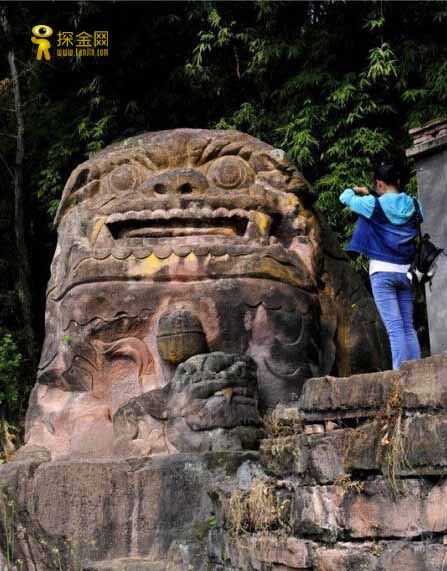Chengdu Airport Archaeological Discovery Shishi Wang

New Airport Archaeological Discoveries
A total of 118 cultural relics were found in the area of ​​nearly 22 square kilometers. Remains of the era up to the Han Dynasty, the lower and late Qing Dynasty, and even the early years of the Republic of China; the remains of the main characteristics of the Han Dynasty tombs, the Tomb of the Song and Shi chambers, temple sites and tombs.
The most interesting for archeologists is the Ming and Qing relics, which will provide evidence for the study of local Hakka culture, thus enriching the history of “Huguang fill Sichuanâ€.
Yesterday, the Sichuan Provincial Institute of Cultural Relics and Archaeology convened the conference of archaeological investigation and exploration of Chengdu Tianfu International Airport. It released an overview of the investigation of the construction of the Chengdu New Airport Cultural Relics and discovered a total of 118 cultural relics sites in the area of ​​nearly 22 square kilometers.
Among the relics in the survey are the cliffs of Wangjiashan, or the former home of the nation’s largest stone lion and Liu Cunhou. Next, cultural relics workers will “decode†these cultural relics. The most interesting for archeologists is the Ming and Qing relics, which will provide evidence for the study of local Hakka culture, thus enriching the history of “Huguang fill Sichuanâ€. In addition, it also has important historical value for the study of the history, culture and social outlook of the Southern Han Dynasty from the Han Dynasty to modern times.
Excavation sites are mostly cultural relics
Shishi or the largest in the country
"The site hasn't moved, archeology goes first." Before the construction of the main project of Tianfu International Airport started, archaeologists from the Sichuan Provincial Institute of Archaeology began exploration. The survey found that there were a total of 118 cultural relics within the scope of the project construction red line (including 1 off-site oil off-site unloading station and railway line site project). Including 106 ancient tombs, 3 ancient temple sites, 5 ancient buildings, and 4 cave temples and stone carvings. Among them, 106 ancient tombs included 22 Han dynasty cliff tombs and 84 Song, Ming and Qing cemetery sites. The five ancient buildings include one Qing Bridge and four courtyards from the Qing Dynasty to the Republic of China. These tombs date from the Han Dynasty to the Qing Dynasty. Types of tombs include cliff tombs, stone chamber tombs, and tombstones.
Among the county-level cultural relic protection units that are combed, the Wangjiashan Cliff Sculpture is located on the cliff side of the Wangjia Mountain on the east coast of Da Anxi, a village of Sanyu Village, and sits on the southeast to the northwest. At 5 meters to the right of the cliff, the entire rock carved into the cliff was carved into a lion, which was 6.5 meters high, 4.7 meters long, and 3.37 meters wide. Shishi wore a bell and wore a Cub on his chest. “The stone carvings use natural sandstone carvings and weigh about 60 to 70 tons.†According to the preliminary judgment of the archeologists at the site, the stone lion was carved in the late Qing Dynasty. It has a history of more than 100 years and is the largest stone lion sculpture ever discovered or even discovered in Sichuan. .
The stone lions are carved using a variety of carving techniques such as round carvings, embossings, and line carvings, and they are anti-official patterns, dignified and majestic images with typical folk styles. "But only one lion was found." According to experts, it may be because of a certain custom or the loss of another lion.
   Do you love the treasure?
   Want to uncover more of the ancient tomb fans?
   Want to find out more treasures?
   Still struggling to find ancient tomb detection tools?
   Discover the gold bar! China's largest treasure shopping mall!
   One-stop help you get!
